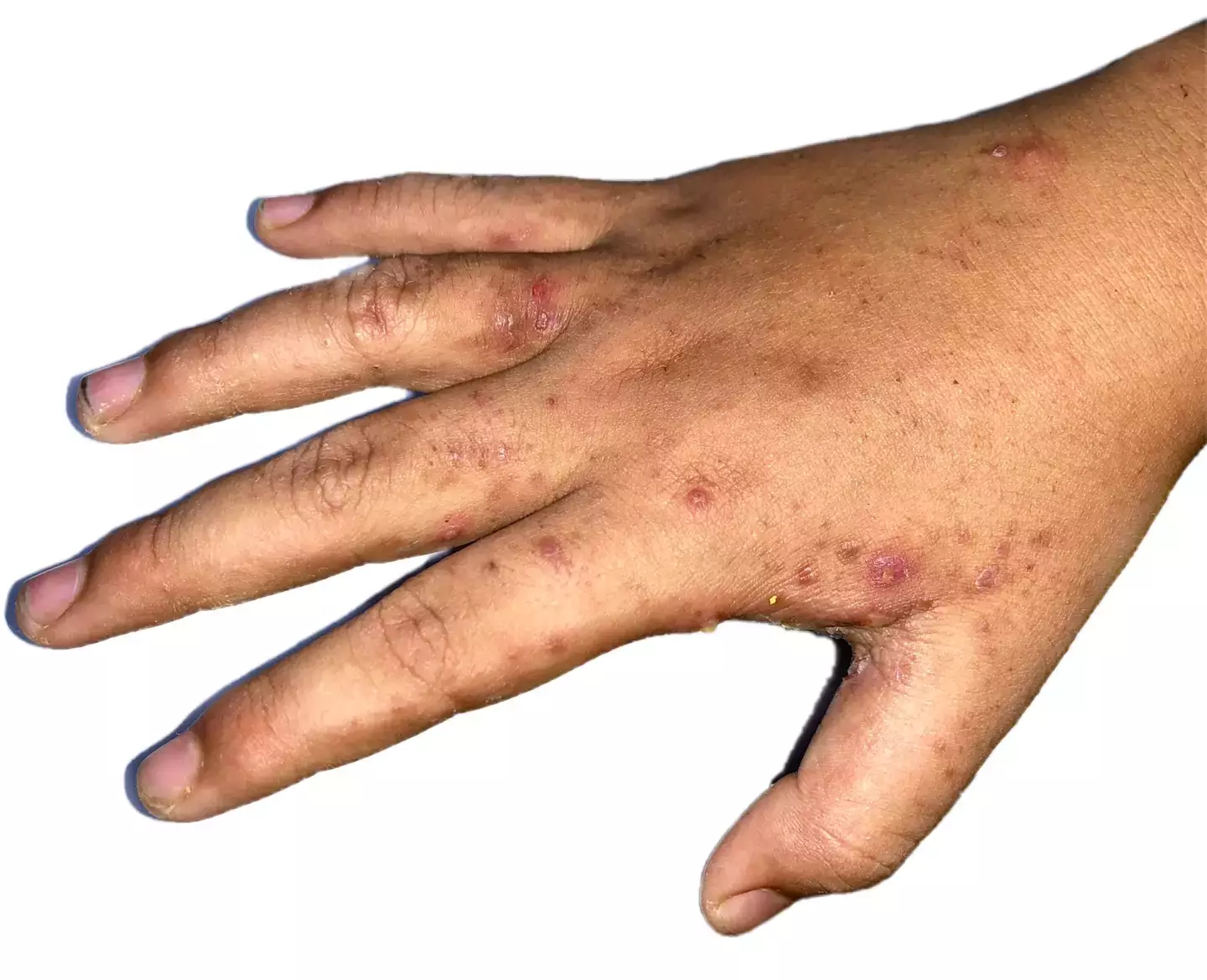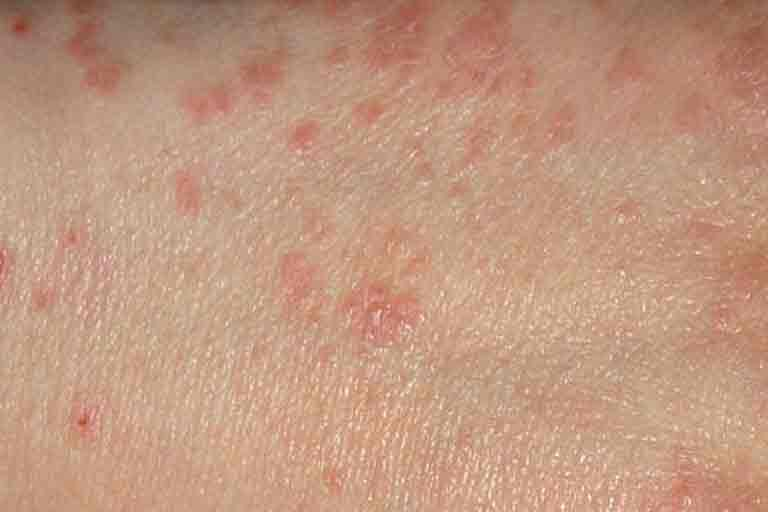The spread of Victorian-era diseases in 2024 is a disturbing reality for the UK. Once thought to be relics of the past, illnesses like scabies, scurvy, and syphilis are making a comeback. Despite advancements in medicine, these age-old diseases are resurging, prompting doctors to warn the public about their symptoms, risks, and prevention. But why are these deadly diseases re-emerging, and what’s fueling their rapid spread?

Cuts on a persons hand; usually a sign of a scabies infection (Getty Stock Images)
The Unexpected Return of Victorian Diseases
Victorian diseases refer to infectious illnesses prevalent during the 19th century, often affecting the poor, malnourished, and overcrowded populations. Historically, diseases like scurvy and syphilis were widespread due to unsanitary living conditions, limited access to medical care, and poor nutrition. While modern medicine significantly reduced these diseases, recent reports indicate they are back in the UK with a vengeance.
From scabies outbreaks in northern England to record-high syphilis cases, these diseases are not just lingering—they are thriving.
Why Are Victorian Diseases Making a Comeback?
Several factors contribute to the resurgence of these long-forgotten diseases. The root causes range from changes in public health systems to lifestyle factors and socio-economic conditions. Let’s explore the main reasons behind this alarming trend.
1. Decline in Public Health Funding
A decline in public health funding is one of the most significant contributors to the spread of these diseases. Cuts in sexual health services, nutritional support programs, and community healthcare have created gaps in prevention and treatment. For instance, syphilis, a sexually transmitted infection that was nearly eradicated in the UK, has reached its highest level since 1948. Chief Medical Officer Professor Sir Chris Whitty points out that a lack of resources for STI screening and treatment has made the situation worse. With fewer outreach programs and reduced access to testing, infections spread more easily.
2. Rising Poverty and Malnutrition
Economic pressures have led to increased poverty and malnutrition, creating the perfect breeding ground for Victorian diseases. Scurvy, caused by a deficiency in vitamin C, was once considered a disease of the past. However, due to poor dietary habits linked to economic hardship, it is now reappearing in some of the UK’s most deprived areas.
A lack of access to fresh fruits and vegetables, especially in lower-income households, has resulted in vitamin deficiencies that can lead to scurvy. The resurgence of this disease is not just a medical issue—it’s also a socio-economic one, highlighting the stark reality of food insecurity in the UK.

The syphilis bacteria up close (Getty Stock Images)
3. Increased Crowding and Close-Quarter Living
Crowded living conditions have historically been associated with the spread of diseases, and the same is true today. As rental costs surge, more people are sharing smaller living spaces, increasing the likelihood of infections like scabies. This disease, caused by mites that burrow under the skin, thrives in close quarters, making it highly contagious among those living in shared accommodations. University halls, prisons, and crowded housing are hotspots for scabies outbreaks.
According to Dr. Tess McPherson of the British Association of Dermatologists, the beginning of the university year often triggers a surge in scabies cases, as students return to dormitories and share spaces. The disease can spread rapidly if even one infected individual fails to receive proper treatment, leading to reinfection within the community.
4. Delays in Diagnosis and Treatment
Another critical factor in the rise of Victorian diseases is the delay in diagnosis and treatment. Many people ignore initial symptoms, attributing them to less serious conditions, which allows the disease to worsen and spread. For example, scabies can be mistaken for eczema or a simple rash, delaying appropriate treatment.

CGI of a parasitic mite beginning to burrow into a person’s skin (Getty Stock Image)
Delays in healthcare appointments also play a role. As the NHS grapples with high demand and limited capacity, patients often wait longer to see a doctor. This delay can worsen diseases like scabies, increasing the risk of secondary infections or severe complications. For syphilis and other sexually transmitted infections, the longer treatment is delayed, the higher the risk of transmission to others.
5. Declining Public Awareness and Vigilance
Public awareness about these diseases has declined over time, with many assuming they were eradicated long ago. The lack of awareness has led to insufficient preventive measures. People may not recognize the symptoms of scurvy or understand how to prevent the spread of scabies, resulting in unchecked transmission.
Increased public education campaigns are needed to raise awareness about these diseases, their symptoms, and the importance of timely medical intervention. Effective public health communication can play a crucial role in preventing further outbreaks.
Spotlight on Key Victorian Diseases Making a Comeback
Now that we understand the factors driving the resurgence, let’s look more closely at the specific Victorian diseases making a comeback in the UK.
Scabies: The Itchy Threat in Crowded Places
Scabies is caused by mites that burrow under the skin, causing intense itching and visible track marks. While the condition is not life-threatening, it can lead to severe complications if left untreated, including bacterial skin infections.
- Symptoms: Red rashes, visible mite tracks, and relentless itching, especially at night.
- Treatment: Topical creams and oral medications can eradicate the mites, but strict adherence to the treatment regimen is necessary to prevent reinfection.

Syphilis: A Dangerous STI on the Rise
Syphilis, a sexually transmitted infection, was once nearly eradicated but has seen a sharp increase in recent years. It can lead to severe complications if untreated, including neurological and cardiovascular damage.
- Symptoms: Sores at the site of infection, followed by rashes, fever, and swollen lymph nodes.
- Treatment: Penicillin is the primary treatment, but early diagnosis is critical to prevent irreversible damage.
Scurvy: The Nutritional Deficiency Disease
Scurvy, caused by a lack of vitamin C, leads to symptoms like swollen gums, fatigue, joint pain, and anemia. It was a common affliction among sailors and impoverished populations in the 19th century but is now reappearing due to dietary deficiencies.
- Symptoms: Gum disease, fatigue, skin problems, and joint pain.
- Treatment: Increasing vitamin C intake through diet or supplements can quickly reverse scurvy symptoms.
Conclusion: The Need for Urgent Action
The resurgence of Victorian diseases in the UK is a stark reminder that public health issues once thought to be eradicated can make a comeback under the right conditions. Factors like declining public health funding, increased poverty, and reduced awareness contribute to this troubling trend. Addressing these diseases requires a coordinated effort that includes better healthcare access, improved public awareness, and targeted intervention in high-risk areas.
Ultimately, combating these diseases is not just about treatment—it’s about prevention and timely response. By raising awareness, improving living conditions, and ensuring access to healthcare, we can prevent these old diseases from becoming a modern-day epidemic.


